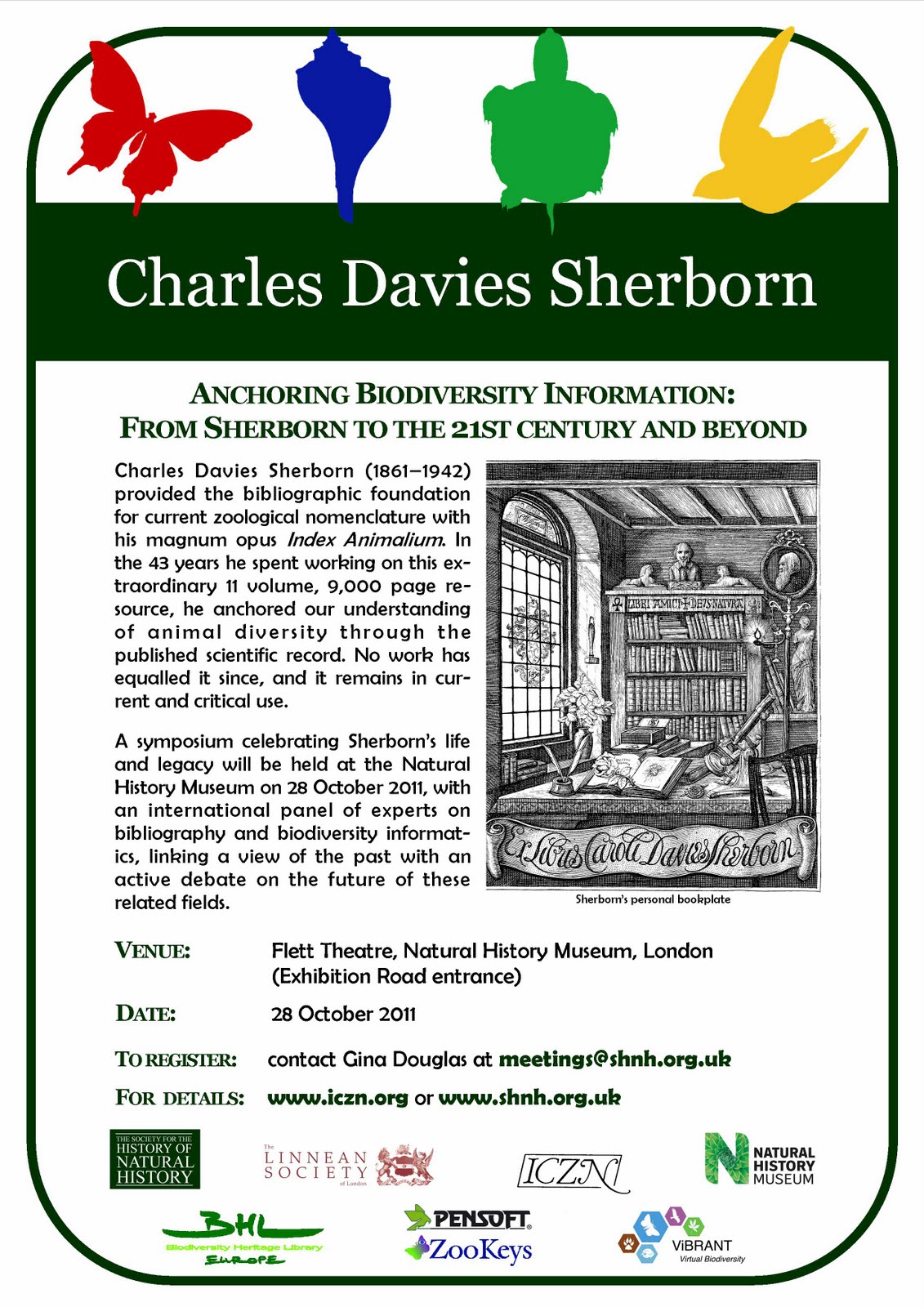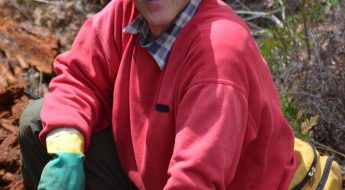
On October 28, 2011, the ICZN (International Commission on Zoological Nomenclature), in collaboration with the Society for the History of Natural History and others, hosted a symposium at the Natural History Museum, London, “Anchoring Biodiversity Information: From Sherborn to the 21st century and beyond,” honoring the 150th anniversary of the birth of Charles Davies Sherborn. Sherborn, 1861-1942, played a critical role in the biodiversity world by being the first to successfully index every living or extinct animal discovered and documented between 1758 and 1850. His greatest work, Index Animalium, took over 43 years to complete but is still referred to by taxonomist around the world. The one-day event, held at the Flett Theatre at the Natural History Museum, London, celebrated the incredible achievements of Sherborn and the ramifications for taxonomic research yesterday, today, and tomorrow.
Several BHL-affiliated staff members presented at the symposium, including BHL Technical Director Chris Freeland and Smithsonian Institution Libraries’ (SIL) staff member and BHL metadata guru Suzanne Pilsk. SIL staff members Grace Costantino (Digital Collections Librarian for BHL) and Leslie Overstreet (Curator of the Joseph F. Cullman 3rd Library at SIL, from which many BHL rare books have been scanned) also presented a poster at the event.
Chris Freeland’s presentation (pictured above) at the symposium, entitled “Approaches to preserving digitized taxonomic data: prints, manuscripts, specimens,” addressed methodologies for responsible curation of digitized prints, manuscripts, and specimens, and outlined best practices for safeguarding digitized taxonomic data to ensure longevity of resources. Such discussions are timely, as the availability of digitized taxonomic data has increased dramatically over the past twenty years as a result of increased support from national funding agencies and the declining cost of scanning devices. As such, natural history museums and libraries have taken on new responsibilities for managing electronic information as ways of providing enhanced opportunities for educational outreach and scholarly dissemination. Museums and libraries have to consider how best to create and care for electronic resources given a volatile technology landscape with rapidly changing file formats and display devices.
Unlocking indexanimaliumstatic
SIL’s Suzanne Pilsk explained the role Smithsonian Libraries has played in bringing the critical work Index Animalium out of the library and off the page with a talk titled “Unlocking the Index Animalium: From paper slips to bytes and bits” (pictured above). Pilsk represented the work done to date by SIL staff, interns and volunteers to create an online version of the work. Smithsonian Libraries’ goal was to provide better access to the Index than was previously available and connect the researcher to the level of information needed. Over the span of years, staff has evolved the project from the initial vision of discovering where the text was located within the library walls, to linking to the scanned text via BHL.
Finally, the poster presented by Grace Costantino and Leslie Overstreet, entitled “Online Synergy: Sherborn’s Index Animalium and the Biodiversity Heritage Library,” delved into the link between SIL’s online version of Index Animalium and the digitized volumes within BHL. SIL’s online version of the Index Animalium allows researchers to search the entire multi-volume work by name, epithet, or other keyword. With the citation thus provided, researchers can then access the cited text itself on BHL, finding not only the species citation but, in many cases, remarkable illustrations as well.
The talks and posters from the symposium can be viewed here, and to find out more about the incredible life of Charles Davies Sherborn, take a look at the feature on him and the symposium in The Telegraph. You can also view photos from the event on Flickr.






Leave a Comment